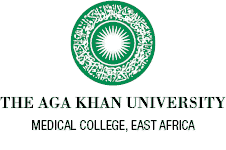Cohort Purpose
The Kaloleni/Rabai Community Health and Demographic Surveillance System (KRHDSS) was set up by Aga Khan University (AKU) and its partners at the Kaloleni and Rabai Sub-County Health Management Offices to:
- Strengthen the capacity of the local department of health for collection, processing and use of population-level health and vital events.
- Provide a platform serving the Aga Khan University’s needs for population level research and academic programming.
Cohort Basics
The Kaloleni/Rabai Community Health Surveillance System is centred around Mariakani township. The surveillance system covers the largely rural sections of Kaloleni and Rabai sub-counties (, i.e., it consists of 7 rural and 3 peri-urban community health units). Baseline data collection occurred between February and June 2017 and registered 78 183 residents within 13 778 households of a geographically defined area. This population cohort was initially followed up biannually for demographic, health, vital events, and migration status updated within a longitudinal database. In 2020, the regular bi-annual enumeration of the population in Kaloleni and Rabai sub-counties as part of the KRHDSS was interrupted, with all data collection thereafter taking place once a year (July to December). The population is characterized by high net migration into the study area whilst attrition within this population has been estimated at 6.4/1000 per year. As of the end of 2022, the population of the Kaloleni/Rabai Community Health Surveillance System stood at 98,175.
Design and Measures
The system collects data on and records household details as well as demographic information of household members (name, age, sex, birth registration, pregnancy, births, deaths, and migration status). Information is also collected on orphanhood and school attendance of children, as well as a range of RMNCH indicator data including use of long-lasting insecticide treated nets (LLINs) and water, sanitation, and hygiene (WASH) indicators. The indicators and their definitions are based on Ministry of Health household-level data collection tools (513 and 514).
Key Findings and Unique Features
The Kaloleni/Rabai Community Health and Demographic Surveillance System is nested on the Government’s community health strategy, utilizing, and enhancing the capacity of local networks of Community Health Volunteers and Ministry of Health personnel working in the community to generate, interpret and use their own data for planning and decision making.
This collaborative model of surveillance demonstrates that working through local populations and existing community structures can mitigate challenges associated with routine population data collection in underserved contexts. This model of surveillance is replicable and scalable, strengthens the local community-based health information system and fosters accountability for results to improve transparency and quality of statistics and information available to the public.
Collaboration and Data Access
Data summaries are available on request. De-identified individual level data can be shared upon application and approval by the KRHDSS Governance committee. The latter was established to oversee the running of the surveillance system with a goal of leading the system towards maximal efficiency and effectiveness in delivering on its mandate, including long-term sustainability. Requests for collaborative research that enhance the utility of the surveillance system are also encouraged. Enquiries can be communicated to the KRHDSS Governance committee by completing and submitting this form to nbi.krhdss-dph1@aku.edu
Data Quality
Concerns frequently arise about the quality of data generated from household demographic and surveillance sites. To uphold data quality, our team diligently conducts surveillance activities, supported by rigorous data collection exercises. This is how we strive to ensure the quality of our surveillance data:
Data is collected using mobile data collection devices pre-programmed with appropriate filters and validation rules.
Electronic data capture enables real-time web-based data checking with prompt feedback to field supervisors for corrective action.
Field officers undertake regular checking of each Community Health Volunteer’s data before uploading to the server.
The data manager undertakes checks for anomalies and inconsistencies in each wave.
Unique identifiers enable the capture of internal migration between the 10 community health units as well as link mothers to children to enable mother-child dyad studies.
Data is collected by Community Health Volunteers who provide promotive, preventive and health educative services in the same households on a regular basis and are thus knowledgeable on health events in these households. All Community Health Volunteers undergo refresher training at the beginning of each round of data collection.
It is important to acknowledge that as some of the variables are self-reported, they are prone to information bias.
Project Summaries


